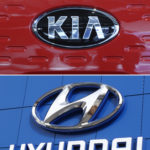Johnson & Johnson will pay more than $4 billion to resolve thousands of lawsuits over its recalled hip implants in the largest settlement of U.S. legal claims for a medical device, three people familiar with the deal said.
The accord will resolve more than 7,500 lawsuits in federal and state courts against J&J’s DePuy unit, said the people, who requested anonymity because they weren’t authorized to speak publicly about the settlement. Patients who have had hips replaced claimed in the cases that the implants were defective.
The company will pay an average of $300,000 or more for each of those surgeries, the people said. The agreement doesn’t bar patients whose artificial hips fail in the future from seeking compensation from J&J, they said. That means the settlement is uncapped in terms of its total value, according to the people. The settlement is expected to be announced next week in federal court in Toledo, Ohio.
The agreement “resolves a lot of litigation that could have dragged on for years and cost J&J much more money in the long run,” said Carl Tobias, who teaches product-liability law at the University of Richmond in Virginia.
The settlement will be the second multibillion-dollar agreement this month for J&J, the world’s largest seller of health-care products. J&J, based in New Brunswick, New Jersey, said Nov. 4 that it will pay $2.2 billion to resolve criminal and civil probes into the marketing of Risperdal and other medicines.
Recall Costs
Mindy Tinsley, a spokeswoman for DePuy, declined today to comment on the accord. J&J has spent about $993 million on medical costs and informing patients and surgeons about the recall, Lorie Gawreluk, another DePuy spokeswoman, said earlier this year. J&J set aside an undisclosed amount for litigation, which it increased before June 30, she said.
J&J fell 73 cents to $93.56 in New York Stock Exchange trading.
J&J’s 5.15 percent notes due in 2018 fell 1 percent to 114.824 cents on the dollar, according to Trace, the bond-price reporting system of the Financial Industry Regulatory Authority. The 6.95 percent notes due in 2029 dropped 2.8 percent to 130 cents on the dollar, according to Trace.
94 Percent
Under the accord, 94 percent of eligible claimants must sign up for the settlement or the company can withdraw from the deal, according to the people.
“It’s certainly a lot of money, but there are whole bunch of people who contend these hips caused grievous injuries,” Tobias said. “So some of them may feel like this isn’t enough compensation for what they’ve gone through.”
The company recalled 93,000 ASR hip implants worldwide in August 2010, saying 12 percent failed within five years. Internal J&J documents show 37 percent of ASR hips failed after 4.6 years. Last year, the failure rate in Australia climbed to 44 percent within seven years.
J&J had touted the metal-on-metal implants, first sold in the U.S. in 2005, as a new design that would last 20 years and offer greater range of motion. As failures mounted, patients complained in lawsuits that the metal-on-metal implant caused dislocations, pain and follow-up surgeries known as revisions. They claimed that debris from the chromium and cobalt device caused tissue death and increased metal ions in the bloodstream.
Federal Suits
The company is facing about 12,000 suits filed in federal and state courts in Ohio, California and New Jersey. U.S. District Judge David Katz in Toledo is coordinating federal litigation and the settlement will need his approval.
Claims in the remaining cases, filed by patients who fear they will need revisions in the future, would be handled in a second round of settlements, the people said.
The $4 billion settlement will provide compensation to hip patients based on factors including age, extent of injuries and whether they had one or more surgeries to replace defective implants, according to the people.
The accord also provides more compensation to hip recipients who suffered “extreme injuries” from the device’s failure, or endured long hospital stays after removal surgeries.
J&J also has agreed to set aside funds to reimburse Medicare and other insurers for claims paid on behalf of hip- implant patients, which could add hundreds of millions of dollars to the value of the settlement, the people said.
Mark Robinson, a member of a group of plaintiffs’ lawyers who are overseeing the progress of the hip cases consolidated before Katz, declined to comment on the settlement.
Sulzer Settlement
The J&J hip settlement dwarfs a 2001 accord Sulzer AG reached with patients who claimed that company’s hip and knee implants were defective. Sulzer, based in Winterthur, Switzerland, agreed to pay $1 billion to resolve those suits.
J&J lost one trial over the ASR hips, won a second, and had scheduled seven more.
In the first trial, a California state court jury awarded $8.3 million in compensatory damages in March to a retired Montana prison guard. The panel ruled that the device was defectively designed and DePuy was negligent. It also held that DePuy properly warned of the risks and that the company didn’t owe punitive damages. DePuy said it would appeal.
Lawyers for plaintiff Loren Kransky argued DePuy failed to test the device adequately before selling it in the U.S., buried surgeon complaints of mounting failures, and studied a redesign of the ASR before scrapping that effort in 2008.
Chicago Jury
On April 17, a state court jury in Chicago sided with DePuy, rejecting a defective-design claim by an Illinois nurse.
The J&J hips came in two related models — the ASR XL Acetabular System and the ASR Hip Resurfacing System. In announcing its recall, J&J cited unpublished data from the U.K. showing that within five years, 13 percent of ASR XL hips failed and needed revisions, and 12 percent of the ASR Hip Resurfacing System failed.
The first federal trial was set for Cleveland in September. J&J settled that case and another set for trial in state court in California in October for undisclosed amounts, the people said.
The consolidated federal case is In re DePuy Orthopedics Inc., ASR Hip Implant Products Liability Litigation, 10-MD-2197, U.S. District Court, Northern District of Ohio (Toledo).
(Editors: David E. Rovella, Patrick Oster)
Was this article valuable?
Here are more articles you may enjoy.

 Verisk: A Shift to More EVs on The Road Could Have Far-Reaching Impacts
Verisk: A Shift to More EVs on The Road Could Have Far-Reaching Impacts  Allstate Insurers Sue Hyundai, Kia to Pay for Claims From Defective Cars
Allstate Insurers Sue Hyundai, Kia to Pay for Claims From Defective Cars  Indian News Agency Sues OpenAI for Copyright Violation
Indian News Agency Sues OpenAI for Copyright Violation  Changing the Focus of Claims, Data When Talking About Nuclear Verdicts
Changing the Focus of Claims, Data When Talking About Nuclear Verdicts 